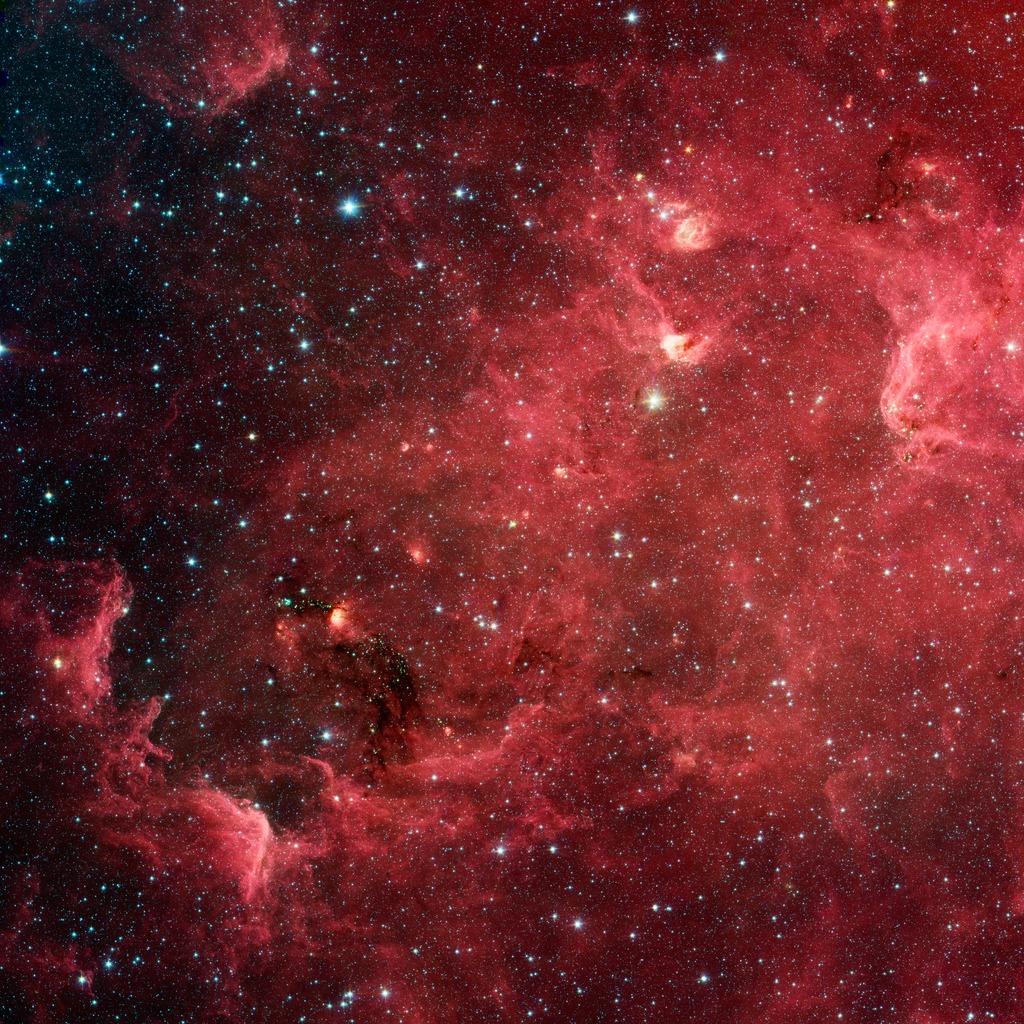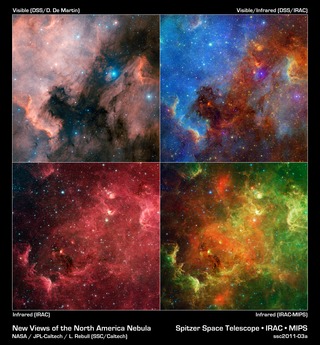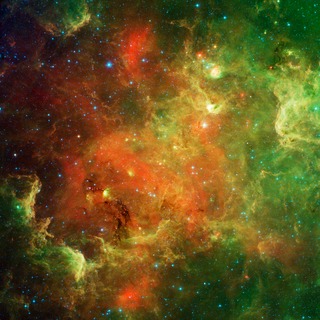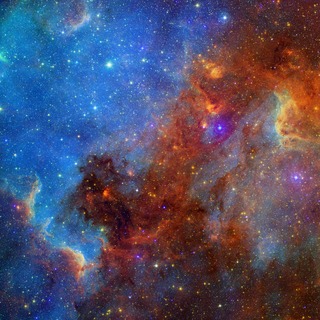
Credit: NASA/JPL-Caltech/L. Rebull (SSC/Caltech)
Observation • February 10th, 2011 • ssc2011-03a2
ssc2011-03a2
This swirling landscape of stars is known as the North America nebula. In visible light, the region resembles North America, but in this new infrared view from NASA's Spitzer Space Telescope, the continent disappears.
Where did the continent go? The reason you don't see it in Spitzer's view has to do, in part, with the fact that infrared light can penetrate dust whereas visible light cannot. Dusty, dark clouds in the visible image become transparent in Spitzer's view. In addition, Spitzer's infrared detectors pick up the glow of dusty cocoons enveloping baby stars.
Clusters of young stars (about one million years old) can be found throughout the image. Slightly older but still very young stars (about three to five million years) are also liberally scattered across the complex, with concentrations near the "head" region of the Pelican nebula, which is located to the right of the North America nebula (upper right portion of this image).
Some areas of this nebula are still very thick with dust and appear dark even in Spitzer's view. For example, the dark "river" in the lower left-center of the image -- in the Gulf of Mexico region -- are likely to be the youngest stars in the complex (less than a million years old).
This image contains data taken by Spitzer's infrared array camera at wavelengths of 3.6 (blue), 4.5 (green), 5.8 and 8.0 (red) microns.
About the Object
- Name
- North America Nebula • NGC 7000 • Pelican Nebula • IC 5070 • IC 5067
- Type
- Nebula > Type > Star Formation
- Nebula > Appearance > Emission
- Nebula > Appearance > Dark
- Star > Evolutionary Stage > Protostar
- Distance
- 2,000 Light Years
Color Mapping
| Band | Wavelength | Telescope |
| Infrared | 3.6 µm | Spitzer IRAC |
| Infrared | 4.5 µm | Spitzer IRAC |
| Infrared | 5.8 µm | Spitzer IRAC |
| Infrared | 8.0 µm | Spitzer IRAC |
Astrometrics
- Position (J2000)
- RA =20h 55m 33.8s
- Dec = 44° 7' 50.9"
- Field of View
- 2.3 x 2.3 degrees
- Orientation
- North is 356.4° left of vertical







